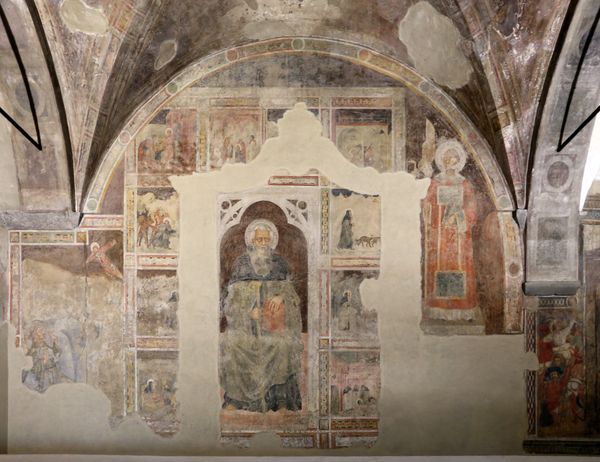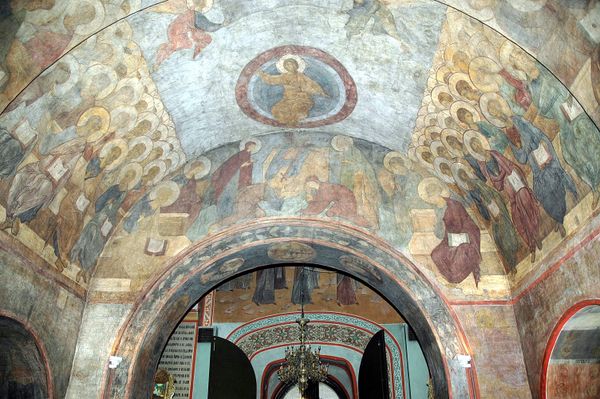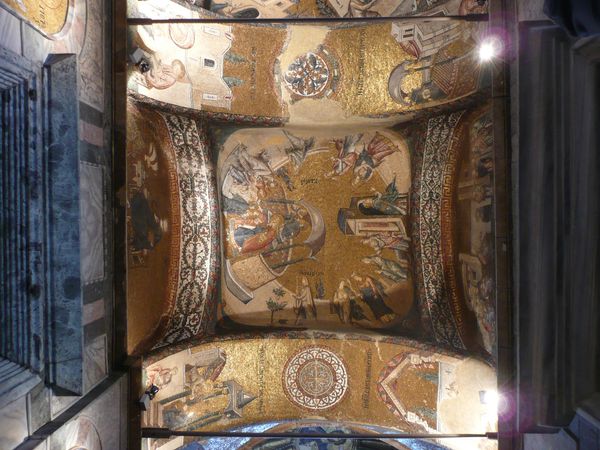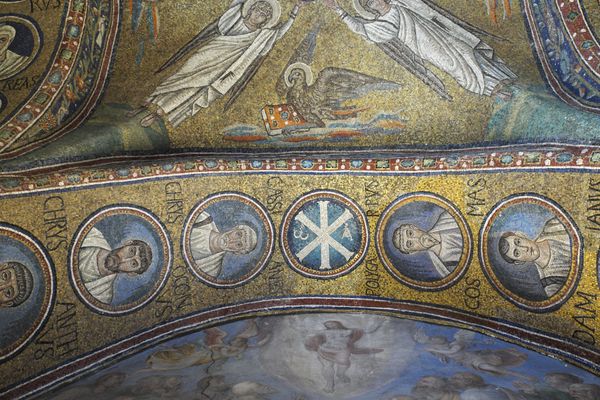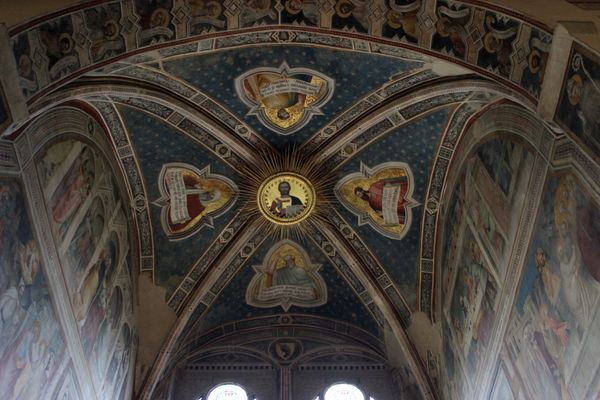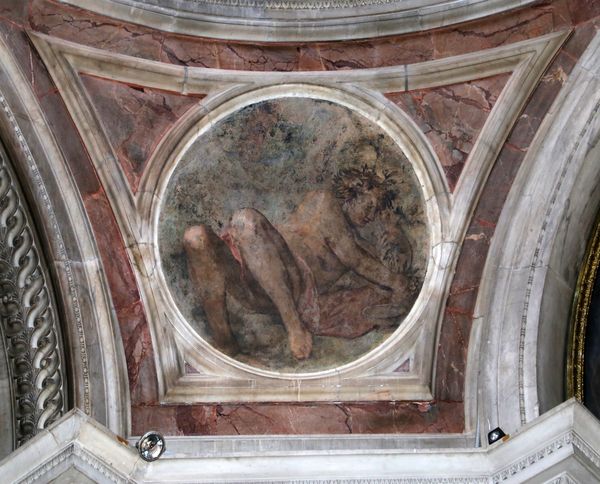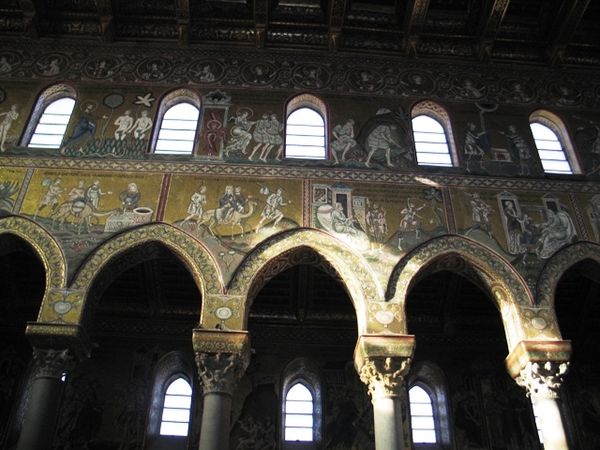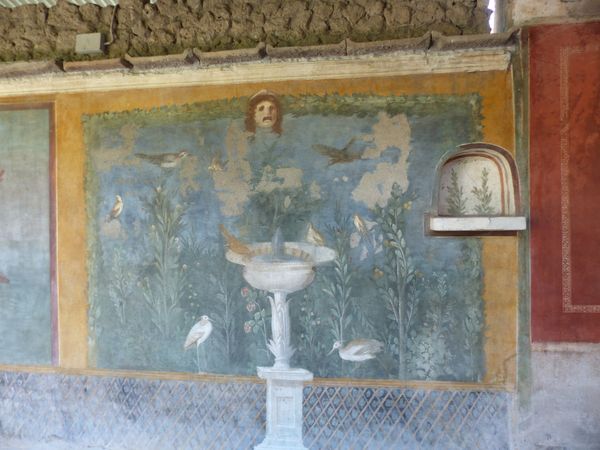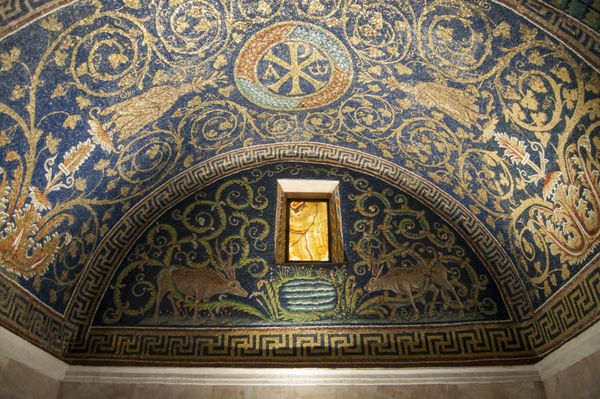
tempera, painting, fresco
#
portrait
#
medieval
#
tempera
#
painting
#
figuration
#
historic architecture
#
fresco
#
christianity
#
history-painting
#
international-gothic
#
christ
Copyright: Public domain
Curator: Oh, wow, there’s something immediately comforting, almost like a soft hymn, radiating from this piece. Editor:Indeed. What we are observing here is a triptych attributed to Bernhard Strigel, an artist active in the late 15th century. Specifically, this tempera on wood work, created around 1480, features Saints Philip and James the Great on the inner wings. Curator: Triptychs are funny things. They whisper of journeys, stories unfolding in parts, yet somehow each panel vibrates with its own intense energy. I mean, just look at those saints—each trapped in his gilded frame yet burning with a fiery faith. I love the gold background contrasting the delicate detailing of their robes! Editor: The function of the gold transcends aesthetics. Observe how it signifies divine light, setting the saints apart within the symbolic register characteristic of International Gothic art. Strigel uses this gilded background not merely as embellishment, but as an active agent within a theological proposition. It serves as a pictorial element but, equally, underscores the higher reality these figures inhabit. Curator: Do you think they were meant to inspire a particular kind of reflection or action? Those closed doors hold secrets. The damaged middle hurts me so. What used to live there? Editor: Artworks like this certainly fostered devotion through visual means. The formal constraints—the deliberate composition and carefully chosen colors— were meant to fix the viewer's attention. As for the central panel...Its current state challenges any attempt at direct interpretation. That invites contemplation about the fleeting nature of physical existence in comparison to enduring, spiritual truths. What feelings did those empty boards solicit from you initially? Curator: Hmmm… I felt a melancholic incompleteness but, still, the piece felt pregnant with meaning and purpose, if that makes any sense. Editor: Very much. What appears damaged often challenges, provokes the active filling-in, the restless inquiry for answers... perhaps its survival is then partly in that challenge? Curator: Definitely something to ponder long after we’ve moved on. I keep wondering...what prayers did these images once hear? Editor: Indeed. This work is so rich in its multiple readings across both art historical registers and lived, spiritual encounter.
Comments
No comments
Be the first to comment and join the conversation on the ultimate creative platform.
